Forty years ago, a new car company called Caterham Cars came into being – in a pub in Primrose Hill, as you’re asking.
Caterham Cars had been around since the 1960s, but only as a dealer and distributor of Colin Chapman’s fabled Lotus 7. Indeed, it was only Caterham boss Graham Nearn who had kept the 7 in production after Lotus moved from Cheshunt to Hethel in 1966, by undertaking to sell every one the factory made.
By 1973, Colin Chapman had far more important things on his mind. With his Formula 1 team as the reigning world champions for both drivers and constructors, Chapman had his eyes on the big time, developing cars with names that would soon become part of UK automotive folklore: Esprit, Elite and Eclat.
He seemed surprised that anyone might still be interested in a car he’d designed in the 1950s before Lotus had won so much as a single race at the top level, so he was only too happy to take Nearn’s money in exchange for the drawings, tools, jigs, spares and rights. I wonder what he’d think now to know that, a further 40 years down the line, essentially the same car would still be in production.

The same car? Conceptually, at least. Like every production Seven ever made by Lotus or Caterham, those you can buy today continue to feature a small-capacity, four-cylinder engine driving the rear wheels. The chassis is still a simple spaceframe design, the body still made from a mix of aluminium and glassfibre components. Much of the hardware may have changed but its DNA (for want of another less hateful and equally effective metaphor) remains unmutated.
Still, there’s no denying the fact that the car has evolved, and to a point where it’s doubtful that much beyond the rear light clusters have survived from Caterham’s earliest days to this. Under that slatted bonnet, there have been myriad engines supplied by Ford, Rover and Vauxhall.
The front suspension is now a proper double wishbone arrangement and most still feature the de Dion rear end that has been part of the line-up since 1984, although if you buy a CSR you’ll find it has the properly independent rear end that some say the car should have had from the start.
Some chassis tubes have been rearranged to find a little more cockpit space and the styling and detailing have changed quite considerably, chiefly to keep the car up to current safety standards. But what of its character? How much of the heart and soul of the original Caterham Super Seven has survived the decades? We thought we should find out.
So Caterham has supplied us with a Supersport R, which, despite its confusing personalised numberplate, really is its most up-to-date creation. Meanwhile, Chris Mintoft has pitched up in his timewarp 1981 Super Seven Twin Cam, a car in all but identical specification to the first Caterham ever built, with its short cockpit, live rear axle, four-speed gearbox and legendary Lotus Elan engine.
What strikes you straight between the eyes the moment you see the two together is how different they look. They share a wheelbase, but very little else. The older car looks far prettier and more dainty, whereas the new Caterham majors on pugnacious presence.
Its headlights are smaller, lower and further forward and no longer appear like Mickey Mouse ears in the driver’s sightline. The nose cone of the new car is entirely different, shorter and more snub, and at the other end, where the older car carries a spare wheel and tyre, the rear of the new Caterham Seven is unrelieved save for, in this case, a pair of go-faster stripes.
Inside, the basic architecture and much of the switchgear is the same, but you notice in the modern car that all the sharp edges of its forebear have been rounded into smooth, consistent radii to comply with Type Approval regs.
It’s also far more comfortable for my 6ft 4in frame because you sit further back. In the old car, if I let my left foot fall where it naturally wants to, it depresses the clutch a couple of inches. The only option is to drive in socks and at a constant speed to slip my hoof behind the clutch, where there is all the room in the world.
Back in 1975, when Autocar road tested the Twin Cam, its performance must have seemed little short of inexplicable. The 0-60mph time of this car that you could build in your garden shed matched exactly the 6.2sec recorded by a 5.0-litre Ferrari Berlinetta Boxer.
It was also quicker than a 4.9-litre Maserati Bora and only a tenth off a Porsche 911 Turbo, despite the massive traction advantage of that car’s rear-engined layout. Today, its engine fires at once with a snort of approval from its twin Dellorto carbs. I’m looking forward to this.
It speaks volumes about how faithfully Caterham has stuck to the formula over the years that anyone familiar with a new Seven could jump in one more than 30 years old and not really have to think about how to make it work.
Legroom aside, the car still seems to fit in exactly the same way. It’s like going back to your childhood home and discovering you know by instinct the exact location of every switch and handle in the building.
It sounds brilliant, quieter than you’d think at idle but rich, characterful and loud as the revs rise. It’s fast, too: the 1.6-litre motor has a modest 126bhp but that’s plenty in a 527kg car, enough to give a power-to-weight ratio just a little better than that of a new, 315bhp Porsche Boxster S.
Suddenly, you realise that however quick that 0-60mph time must have seemed in 1975, it gives a very poor impression of the car’s performance. Were it not for the limited traction of the live axle, period tyres and the perhaps more merciful nature of that generation of road tester, it would have gone far, far faster.
Subjectively, it feels like a 5.5sec car or thereabouts. The torque spread is also easily wide enough to cover the gaps between the ratios of the beautifully mechanical four-speed gearbox.
But it is the way the car handles that is such a revelation. It’s so softly suspended that you can’t merely feel the nose drop as you brake; you can see it. Angle the steering left and right and you can feel the car orbit around its central axis. It should be a recipe for disaster, but because there’s so little mass to control, it works brilliantly.
Even in the wet, traction is excellent for a car with a live rear axle, and when it slides, which it does readily, it doesn’t flick or snap but rolls gently into the most benign oversteer. It would be dead slow on the track, not least because there’s no limited-slip differential, but for slithering around the lanes with the twin-cam howling away at you, it’s marvellous.
Indeed, it’s only significantly let down by its ride: over rough surfaces, there a little too much bouncing and bump-steer to make it a wholly comfortable and relaxing experience.
The new car awaits its turn, a menacing presence at the side of the road. Impressively, its quoted weight is scarcely any more than that of its antecedent, although that doesn’t include all the weather equipment thankfully fitted to the test car. With 180bhp from its 2.0-litre Ford motor, it’s clearly going to be a lot quicker. But more fun? That remains to be seen.
Something was lost from the sound of all Caterhams that day in the 1990s when the company was forced to fit fuel injection, and while the Duratec sounds purposeful enough, after the Twin Cam you miss the induction hammer urging you on your way.
But there’s no doubting the extra urge. At any speed, it hauls effortlessly and easily away from its grandparent. The only disappointment is the five-speed gearbox, which is still a Ford-Sierra-based unit but superior only in quantity of ratios to the Cortina unit in the Twin Cam.
The greater change is in how the new car handles. With its de Dion rear axle, double wishbone front suspension, track-day tyres, wildly stiffer springs and iron-fisted dampers, the Supersport R is as a dart to a paper plane.
It is so much more precise, quick witted and agile that it offers the skilled driver on the right road (or, ideally, track) an experience quite beyond the imaginings of anyone who’d only ever driven an older car. Here the difference is between a recreational thing of fun and a deadly serious road weapon.
Choosing between them is a pretty pointless exercise. At £27,995 assembled, the Supersport R is not only more than 30 years younger but at least £12,000 more expensive. What I will say is that if you fancy yourself as a road and track-day warrior, the modern car does things that the old one wouldn’t recognise and is clearly the one to choose.
However, if what you really hanker after is a fast, fun and wonderfully evocative British sports car in which to enjoy journeys short and long on decent roads, you’ll find what the older Caterham lacks in raw pace it more than recovers in sheer charm.
Six of the best of the rest
Here are six of the many Caterhams that have particularly stoked our fires over the past four decades:
1984 1700 SUPERSPRINT
Employed a bored-out, balanced, big-valve Kent pushrod motor with 135bhp and was also among the first Caterham Sevens to be available with a de Dion rear axle and the long cockpit for taller drivers. Timed by Autocar at 5.6sec to 60mph in 1985.
1990 CATERHAM HPC
Powered by a grunty 2.0-litre Vauxhall twin-cam motor with 175bhp and huge 45mm Webers. Autocar staff (including James May) built one over the course of a weekend and, after Caterham had rebuilt it, I ran it as my long-termer for six glorious months. Possibly the best all-purpose Seven there has been.
1997 CATERHAM SUPERLIGHT R
A car to take Caterham performance to the next level, combining 190bhp punch with ultra-lightweight construction thanks to the all-aluminium Rover K-series motor and deletion of weather equipment. Hit 60mph in 4sec flat and would in time become the R400 model.
1999 CATERHAM R500
In many ways, still the nuttiest Seven of all, using a Rover K-series engine tuned by Minister to give a shattering 230bhp. Its name said it all: that ‘500’ referred to 500bhp per tonne. Timed by us then at 3.4sec to 60mph; later models now fitted with Ford Duratec engines have gone sub-2.9sec.
2005 CATERHAM CSR260
Sophisticated suspension system, developed by former Lotus F1 driver John Miles, includes pushrod front suspension and fully independent double wishbone rear end. Rides like no Caterham in history and, with a 260bhp, 2.3-litre Cosworth-developed Ford motor, is a rare performer, too.
2013 CATERHAM R600
Okay, it’s only a racing car at present, but thanks to 275bhp and excessive torque from its supercharged Ford motor, were a road-going version to be made available it would be sure to represent yet another landmark in Caterham history. Caterham says 0-60mph takes 2.6sec.




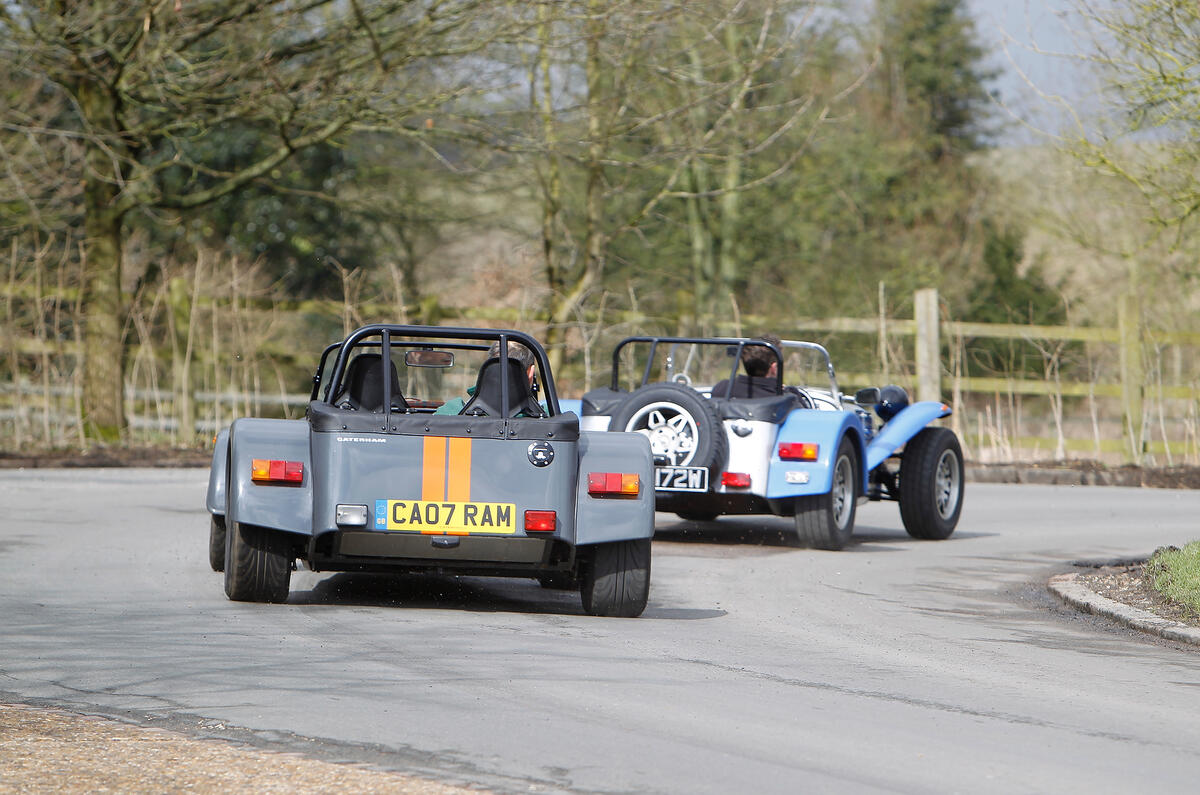





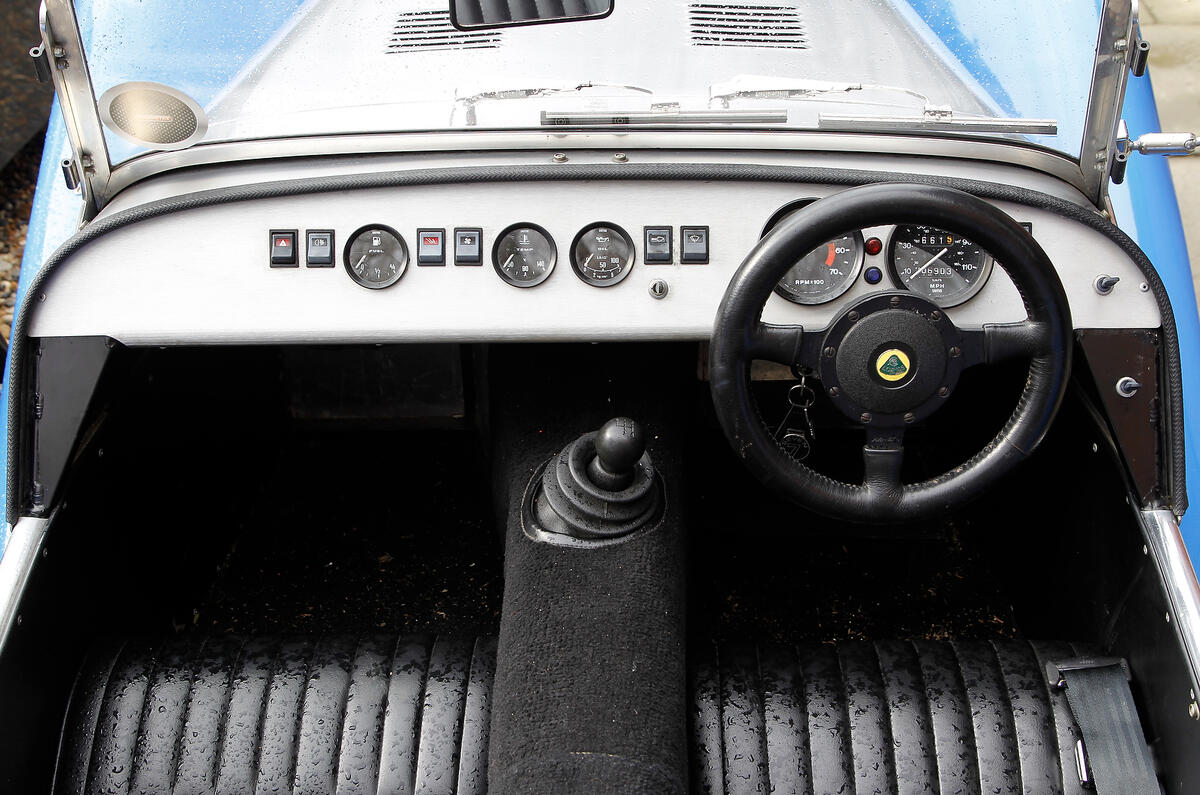


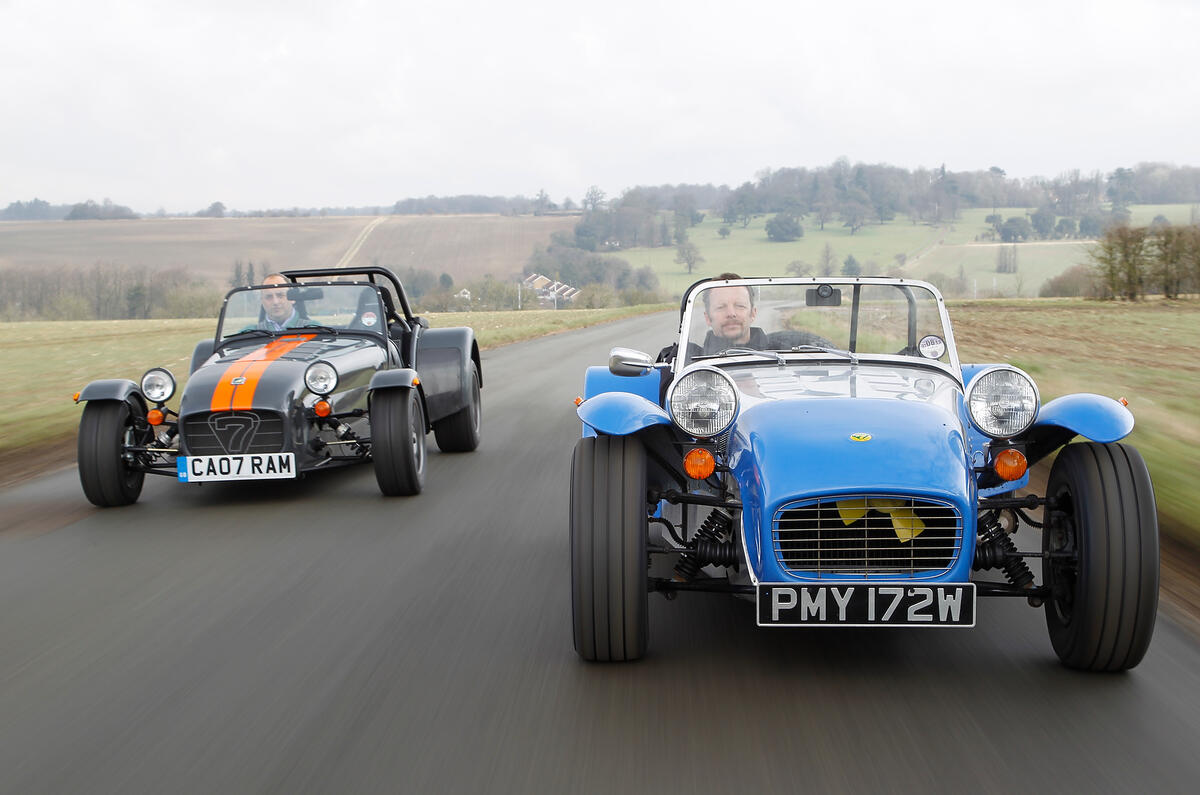





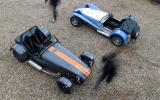
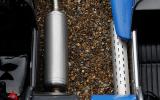


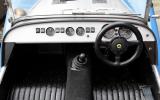





Join the debate
Add your comment
I have never seen a Caterham
I have never seen a Caterham 7, on the road.
Why is DNA a hateful
Why is DNA a hateful metaphor?
Why is DNA a hateful metaphor?
Because it's ancient, over-used, unimaginative, lazy, hackneyed, banal, stale, done-to-death, hoary, eye-rollingly commonplace and I never want to see it used as a metaphor again.
hmmmm...
....is the old one what the suzuki'll be like?